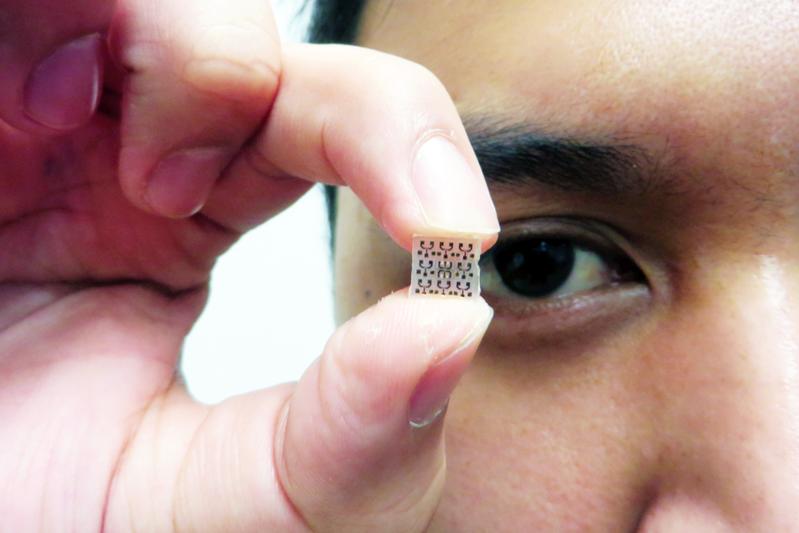
A Challenging European Research Project to Develop New Tiny Microscopes

GaN LED chip with optobiomedical chemical sensors
Hutomo Suryo Wasisto/TU Braunschweig
To demonstrate the usefulness of this new scientific tool, at the end of the project the developed chip-sized microscope will be used to observe in real-time the interior of cells present in a disease called Idiopathic Pulmonary Fibrosis (IPF), a chronic age-related lung disease killing 0.5 Million people each year worldwide.
The new microscope will be affordable and ubiquitously available. In science, it is expected to lead to fundamental breakthroughs in virtually every field of research that currently makes use of optical microscopes – particularly in the medical field.
Making microscopic images will be easy and accessible to researchers who operate out in the field, away from scientific infrastructures and they will be affordable to researchers in developing countries. In the future, these microscopes-in-a-chip could also be integrated into consumer electronic products, being as common as a camera is in a smartphone today.
Background
Today, optical microscopes are limited in resolution by physical laws related to the wavelength of light, around half a thousandth of a millimetre. Single proteins, DNA molecules or the interior of living cells are much smaller and cannot be directly observed with conventional optical microscopes.
At the moment, only indirect observation – that means interpretation of measured data – can be made, for example in complex, expensive and bulky electron microscopes. These devices, however, are not suitable for the observation of delicate living tissues.
The Ambitious Project Objectives
The objective of the ChipScope project is to develop a new kind of optical microscope allowing to see the infinitely small. During the project, very small LEDs of 50 nanometers, this is 1000 times smaller than the diameter of a human hair, will be developed and used as light sources for the new microscope which will be integrated on a chip.
The fundamental difference with conventional optical microscopy will be that the illumination is made by extremely small individual light sources instead of a wide illumination field and tiny detectors in the camera. This allows super-resolution optical microscopy, which could be used to investigate extremely small structures such as viruses, DNA or living cells, in real time.
A Highly Interdisciplinary Project Team
The ChipScope project is running from January2017 to December 2020. The project team includes SMEs, universities and research organisations under the leadership of the University of Barcelona. Other partners are the Technical University of Braunschweig in Germany, the University Tor Vergata in Rome, the company Expert Ymaging in Barcelona, the AIT Austrian Institute of Technology, the Medical University of Vienna and the FSRM – the Swiss Foundation for Research in Microtechnology.
Contact
Dr. Thorben Dammeyer
LENA-Geschäftsführer
Technische Universität Braunschweig
Institut für Halbleitertechnik
Hans Sommer Straße 66
38106 Braunschweig
Tel.: 0531 391-3801
t.dammeyer@tu-braunschweig.de
www.tu-braunschweig.de/mib/lena
https://magazin.tu-braunschweig.de/pi-post/entwicklung-miniaturisierter-lichtmik…
https://www.tu-braunschweig.de/mib/lena
https://www.tu-braunschweig.de/mib/lena/quanomet
https://www.tu-braunschweig.de/iht












